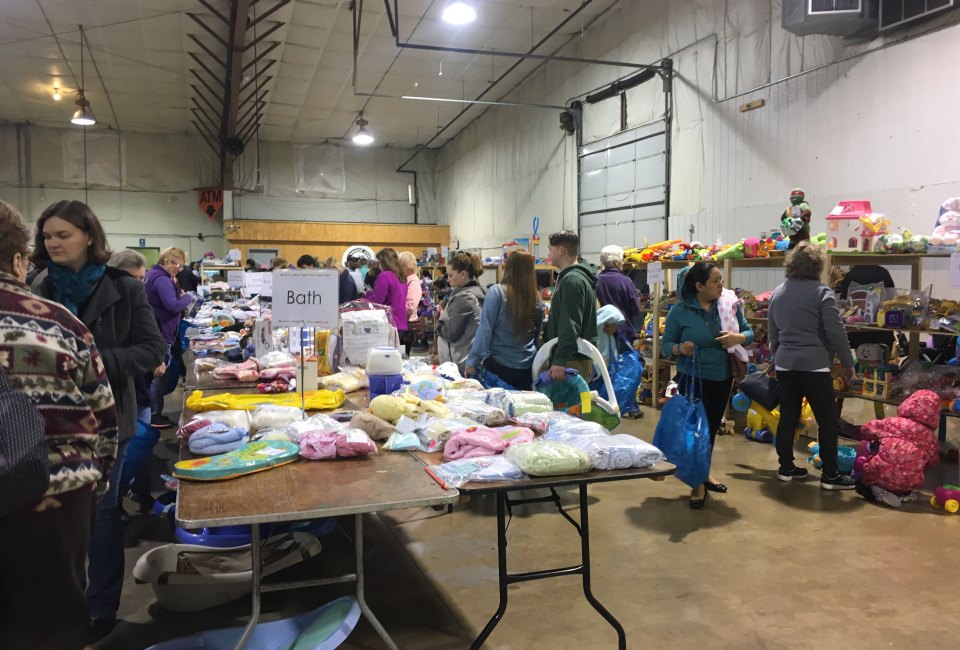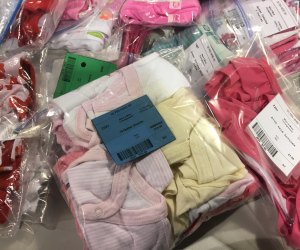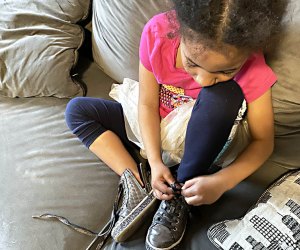It's Consignment Season, Clean Your Closets and Cash In

It's finally getting warm out, spring is in the air, and you are probably starting your spring cleaning tasks! If those tasks include clearing out your kid's closets and attempting to downsize the growing mass of post-holiday toys, then you are in luck—spring is peak consignment sale season! While it might be tempting to just toss the growing pile of clothes and toys, but what you have on your hands is a treasure trove. With proper planning and a little effort, you can turn that pile into a cash advance on your next big purchase, or use it to restock your child's growing wardrobe needs.
Here are our top tips for making your consignment efforts worthwhile:
OUR LATEST VIDEOS
Stage 1: Planning
- Shop around. If you live in a major metropolitan region, chances are there are several competing consignment sales to choose from. Not all consignment sales are created equally. Choose one that draws a big crowd, and also gives you the best percentage of your consigned earnings (before I registered I noticed some consignment sales that pay as low as 40 percent and some that pay as much as 70 percent).
- Gather your goods and begin sorting and set up a consigning station in your home. Using this method you can quickly identify which items may require a little TLC before they are ready to put out for sale. Toys should be clean and with working batters, and clothes should be spot and wrinkle free.
- Separate seasonally appropriate clothes. Your winter coats may be in great shape, but no one wants to purchase a winter jacket that may or may not fit their little one six months from now.
- Gather supplies. You will need safety pins, tagging tools, and zip lock bags in multiple sizes, as well as zip ties. Not to mention hangers. Bonus: if you have a free clothing rack you can hang clothes as they are ready.
- Check your items for recalls or safety fixes. Don't waste your time bringing items they won't accept.
- Earn more and get ahead of the crowd by volunteering. Many sales will let you take an extra cut by offering up your time, and also offer the perks of early shopping. That said, also consider if it is worth your effort. You may be volunteering for several hours, is an extra 10 percent worth that effort (consider the hourly pay against your highest estimated payout).
Stage 2: Staging and Pricing
-
Consider your own benchmarks. What would you pay on consignment for your items? Try to disassociate yourself from any sentimental value. Price your item at or slightly below what you would pay. Wouldn't you rather sell something for slightly less than end up taking it back home again?
-
Be realistic. Like the point above, but with a slight twist. If you paid $800 for an amazing stroller, you are going to have to eat the majority of that ticket price even if you 'barely" used it. Strollers marked over $200 likely will not move at these sales.
Price common items to move. Baby clothes, in particular, are normally bountiful at consignment sales. Rare finds can be priced higher.
Group items by size and type. Even if you do not volunteer, you may be required to set things out on the sales floor. Make it easy on yourself.
Bundle smaller items to make them more enticing: packs of socks, hats, even books can often be packaged into a zip lock bag. Onesies are another item to group—pair them with pants to create an outfit or hang several together (think how they sell them in Target or Osh Kosh).
If you have the manual attach or original packaging, make sure to include it. If you don’t have the original you may be able to find it online. Printed manuals and original packaging make the item seem barely used.
Keep your brands in mind. Lower ticket items should be priced accordingly (if you paid $4 you will not get $3 in return because shoppers know what the retail value is).
Don't feel like you have to figure things out along especially if you're new to the process. Consignment Mommies, and My Frugal Home are both great resources for pricing if you aren't sure where to start.

Stage 3: Get Ready to Sell!
- Make sure the moms and dads in your circle know about the consignment sale, the more customers at the sale the more you are likely to sell.
- If you have big ticket items, consider posting them to your social media accounts.
- If your consignment sale advertises, they will likely provide you with postcards or flyers you can share with friends or your local coffee shops.
- Organize your items for easy drop off: keep clothing separate from toys and other goods. They will likely have to pass a quick inspection so you can unload your clothes first for this stage rather than mixing them together.
- Rubber bands, zip ties, or tape your clothing by size, so they don't get mixed if you carry them over in a box or crate.
- Unless you really want to go collect your goods at the end of the sale, allow them to be marked down to 50% for the last day (most sales offer this), and opt in for unsold items to be donated. Truth be told, you were probably planning to do this with them in the first place!
All photos by the author






















































